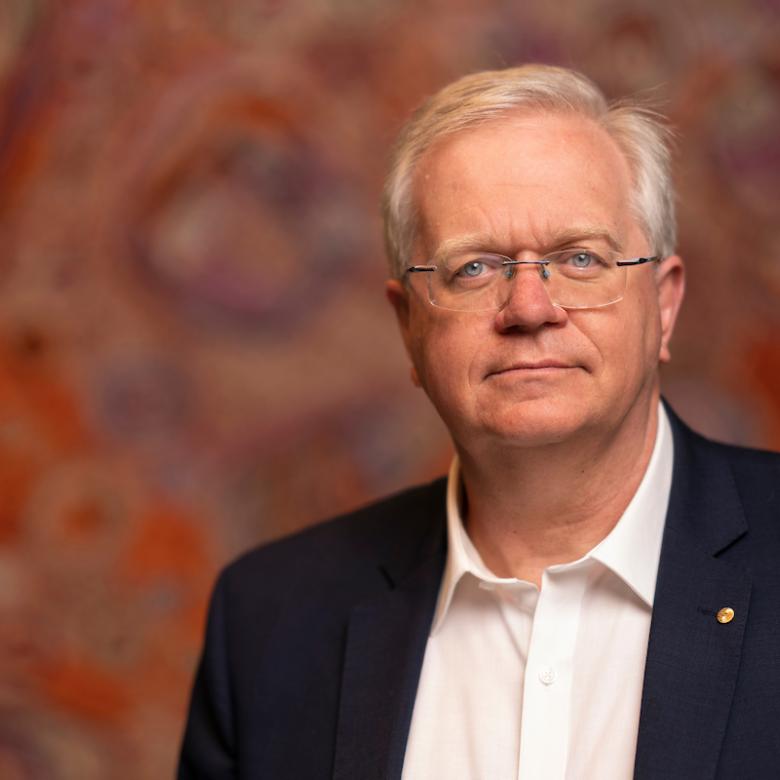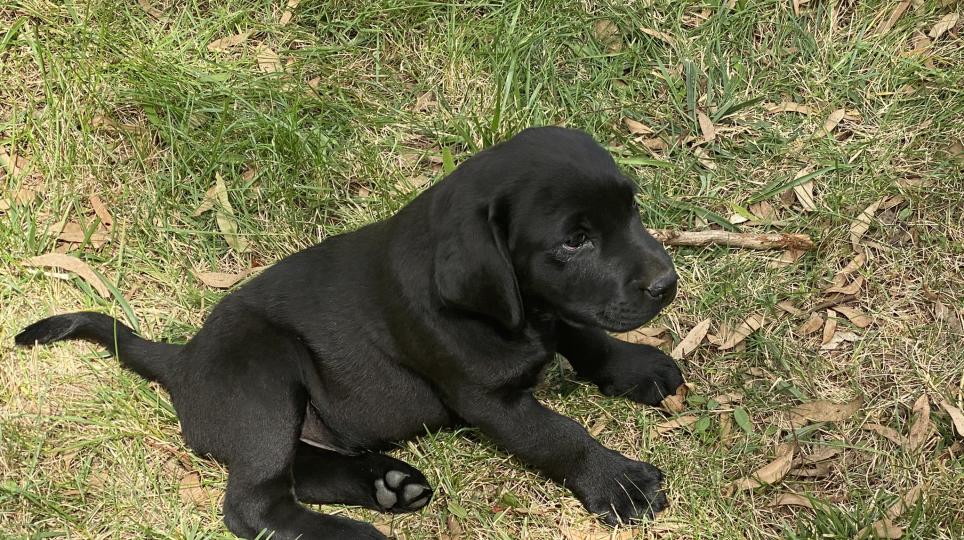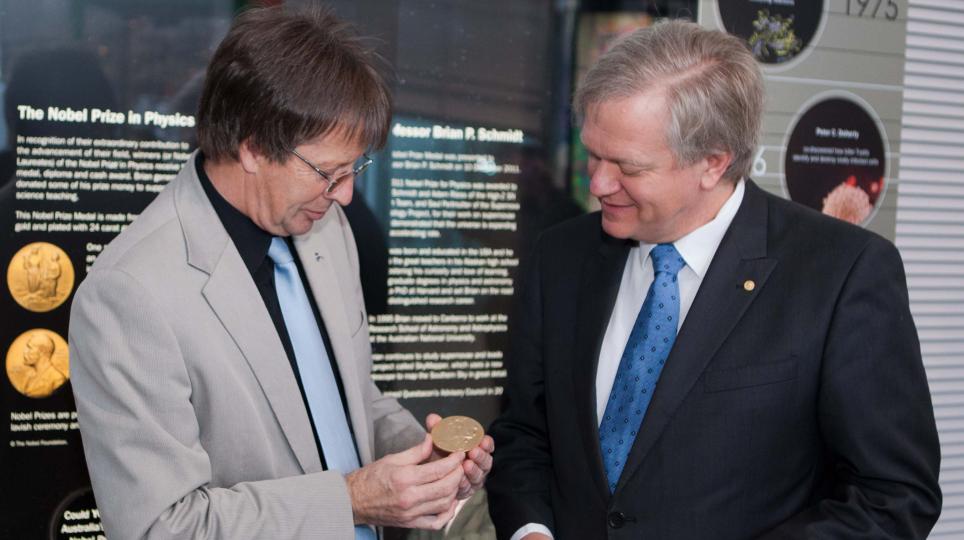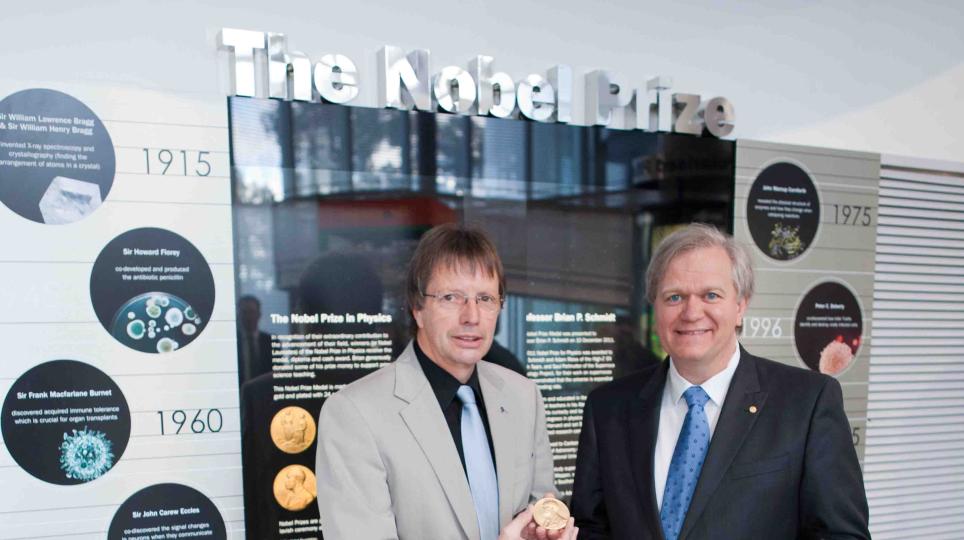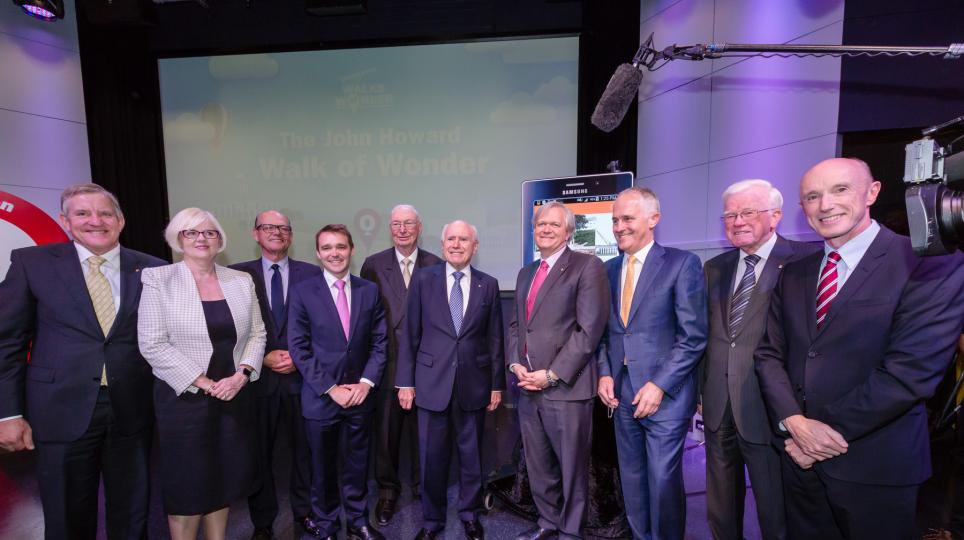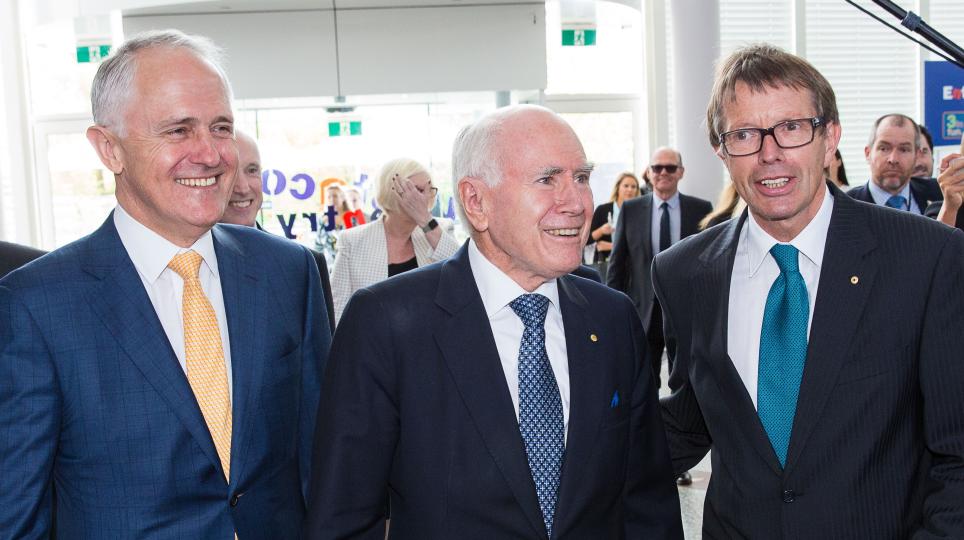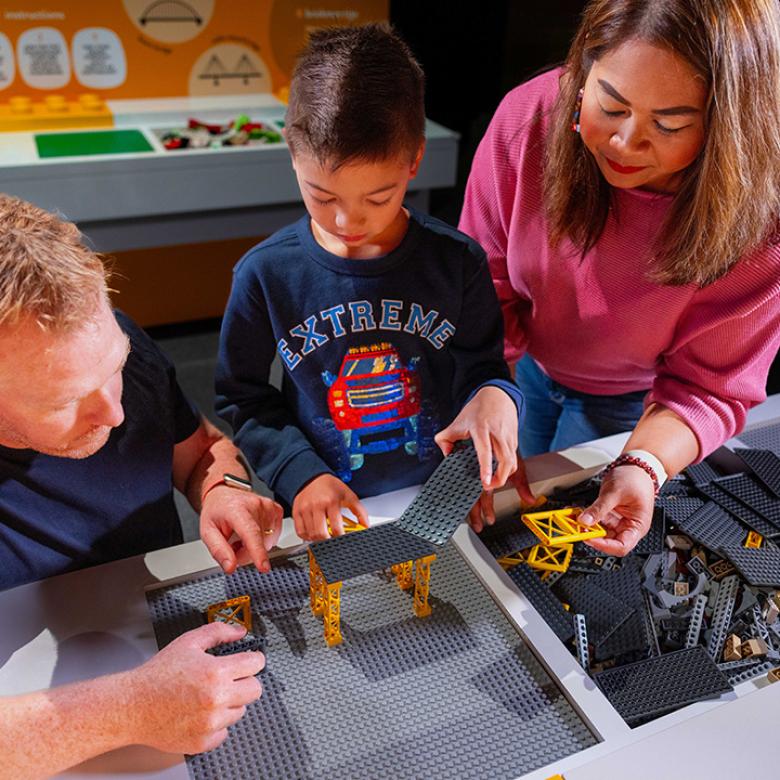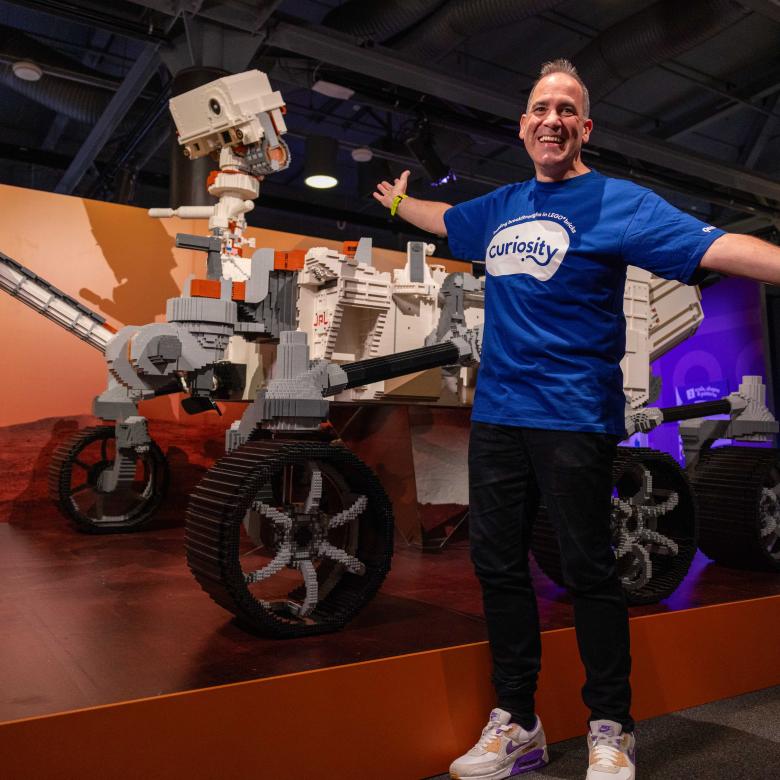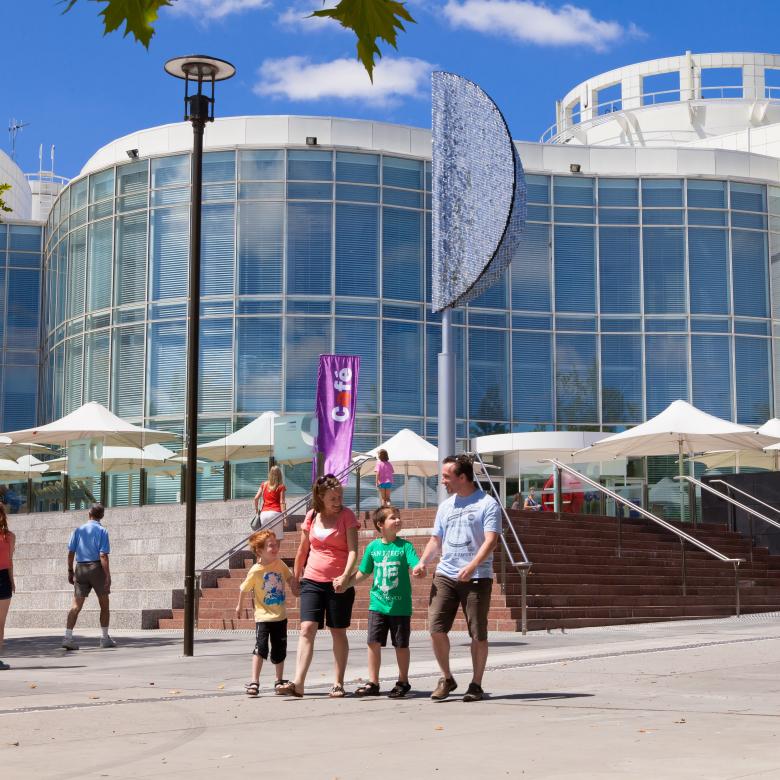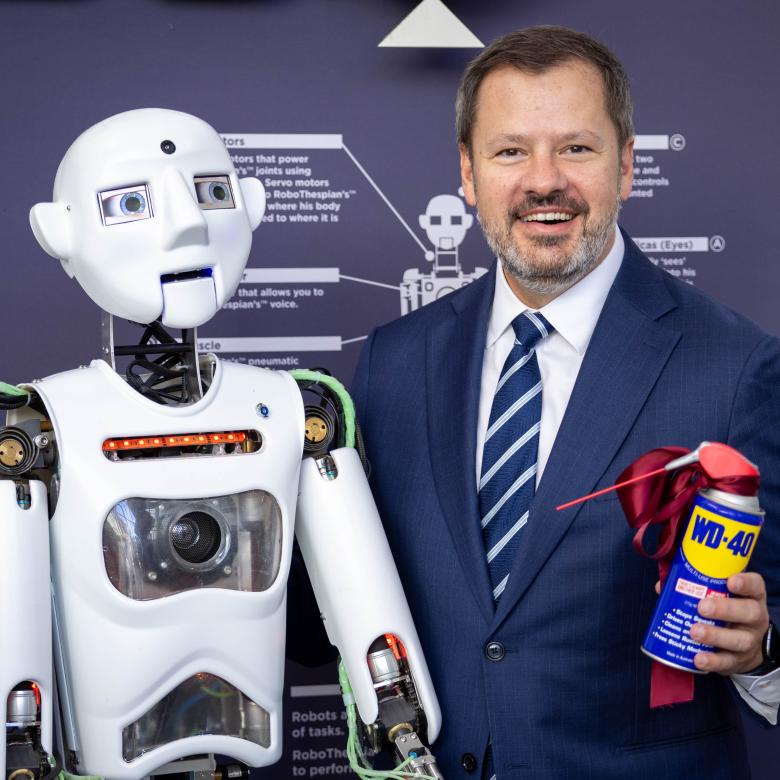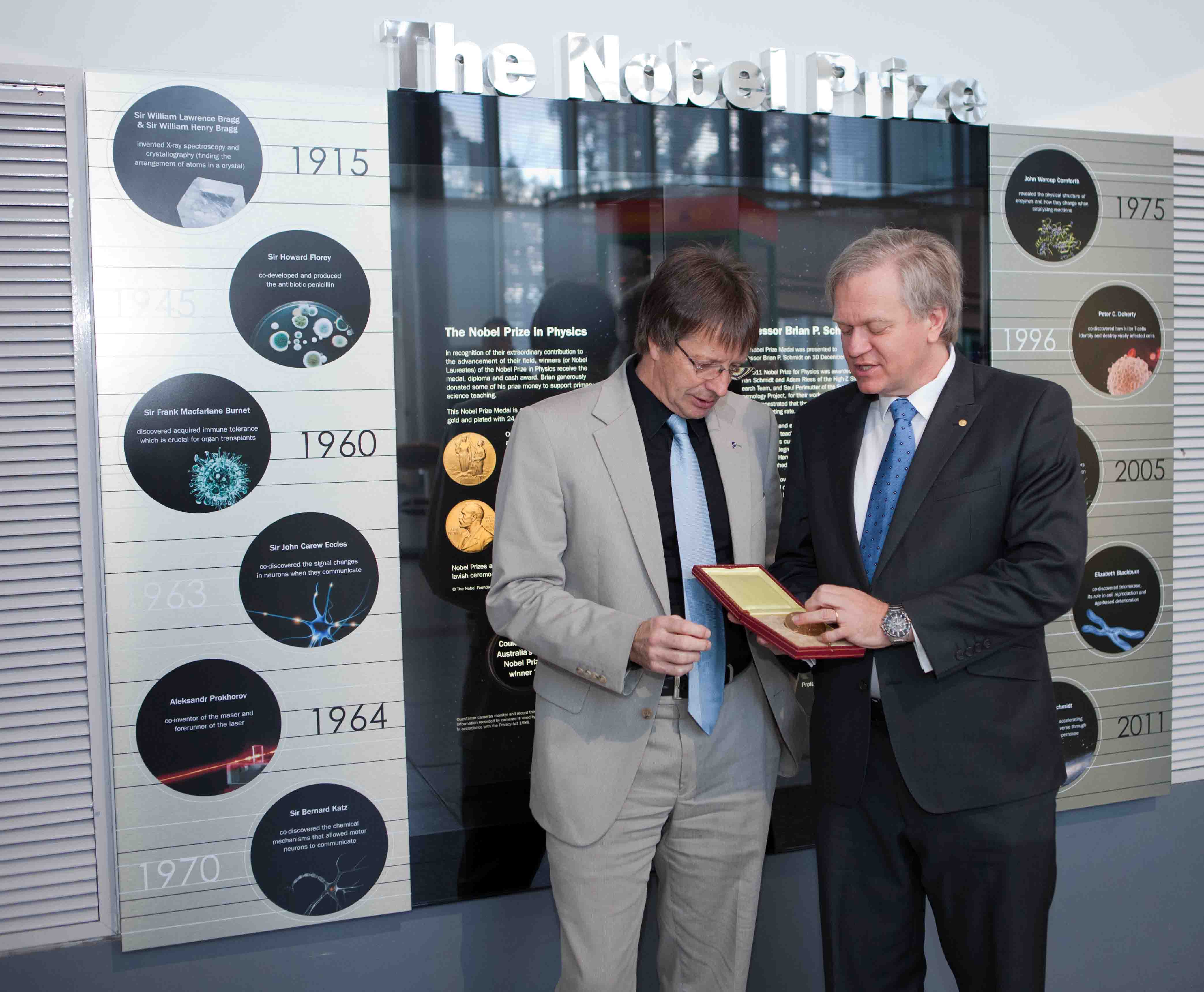 The story is well known, now. When Professor Brian Schmidt set out to measure the pace at which the universe was expanding, he thought he would be calculating the speed at which this expansion was slowing down. In fact, he found the opposite. His data – gathered by studying the light from exploding stars, indicated the universe was actually expanding at an ever-increasing rate.
The story is well known, now. When Professor Brian Schmidt set out to measure the pace at which the universe was expanding, he thought he would be calculating the speed at which this expansion was slowing down. In fact, he found the opposite. His data – gathered by studying the light from exploding stars, indicated the universe was actually expanding at an ever-increasing rate.
Professor Schmidt spent the next six weeks trying to detect and correct his errors, until finally realising there was no mistake. His discovery turned the current thinking about the universe on its head and in 2011, he and two colleagues won the Nobel Prize in Physics.
Brian grew up in Montana and lived in Alaska, some of the best places on earth to watch the night sky. His fascination with the stars, space and the laws of the universe, led him into astrophysics and a PhD from Harvard university. In 1994 he and his wife moved to Canberra, to work at the ANU School of Astronomy where he did his noble prize-winning work.
In a science community such as in Canberra, it was a given and only a matter of time before Professor Schmidt and Questacon would cross paths. Their meeting was like a natural pair bonding and the ANU relationship with Questacon goes back longer than 40 years.
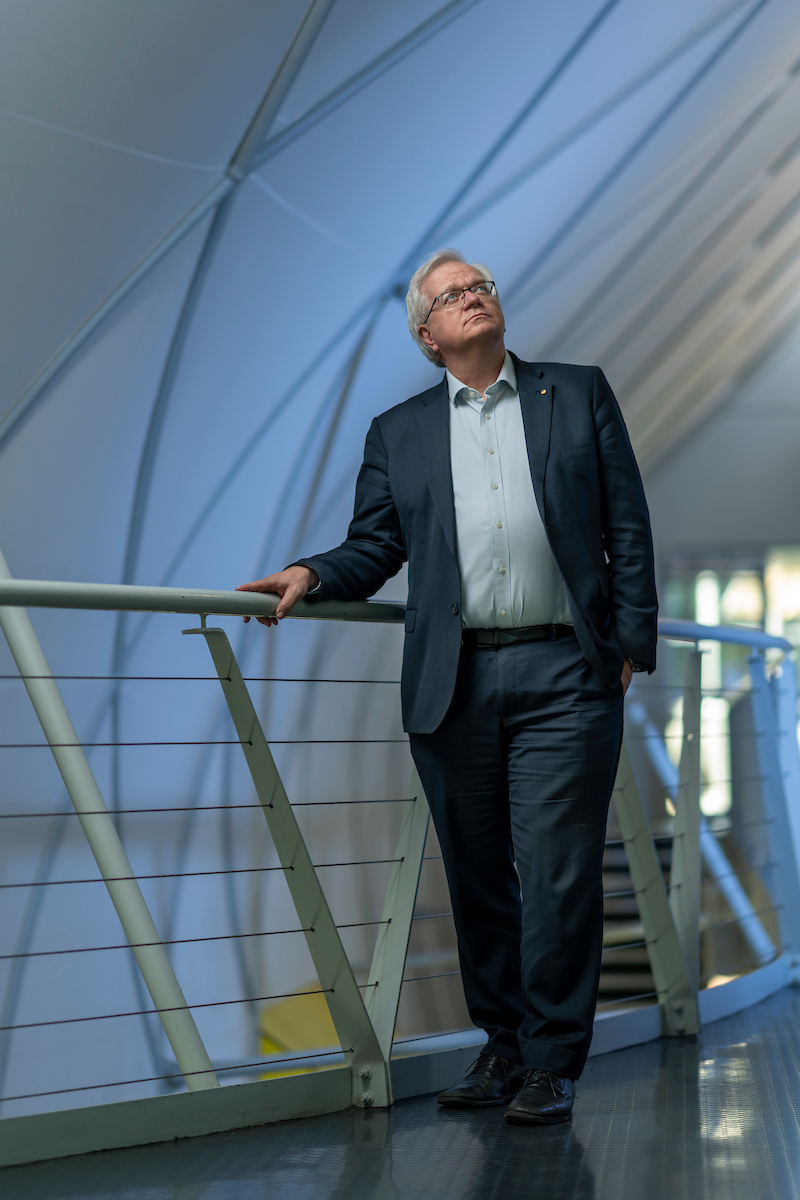 “Questacon and the ANU are both national institutions in Canberra with science as a major focus of both institutions,” says Professor Schmidt, “The ANU had a massive role in founding Questacon in the 80s, in fact when it first began, Questacon was only a little room at the back of the ANU Physics department.
“Questacon and the ANU are both national institutions in Canberra with science as a major focus of both institutions,” says Professor Schmidt, “The ANU had a massive role in founding Questacon in the 80s, in fact when it first began, Questacon was only a little room at the back of the ANU Physics department.
“By the 90s, this partnership had already reached new heights. ANU had solidified its commitment to teaching and research in science communication with the opening of the Centre for the Public Awareness of Science (CPAS). By this point CPAS was delivering joint scholarships and courses with Questacon, which had also grown into a science centre offering exhibits and tours.
“This partnership broke down the barriers between academic and practical science communication. We at ANU are all so proud of the progress so far. So it is really important that the ANU and Questacon continue to work together to give science a voice for the nation, especially amongst young people, as they start making choices about what they want to do in life. I foresee a promising and dynamic shared future.”
There’s a synergy and an important nexus between Questacon and its mission to inspire youngsters into science, technology, engineering and mathematics, (STEM) and the national University with its College of Science and Research School of Astronomy and Astrophysics.
Professor Schmidt has had a long and personal relationship with Questacon, serving a three-year term on its advisory council from 2012, bringing his expertise and insights to Questacon’s work. Questacon’s Schmidt Studio, where all its digital and video content is produced is named after him and when Brian realised his Nobel Prize medal was so valuable, it would probably need to be locked away in a safe, he instead generously gifted it in perpetuity to Questacon, where it’s on display to inspire visitors. He’s also made personal donations to Questacon.
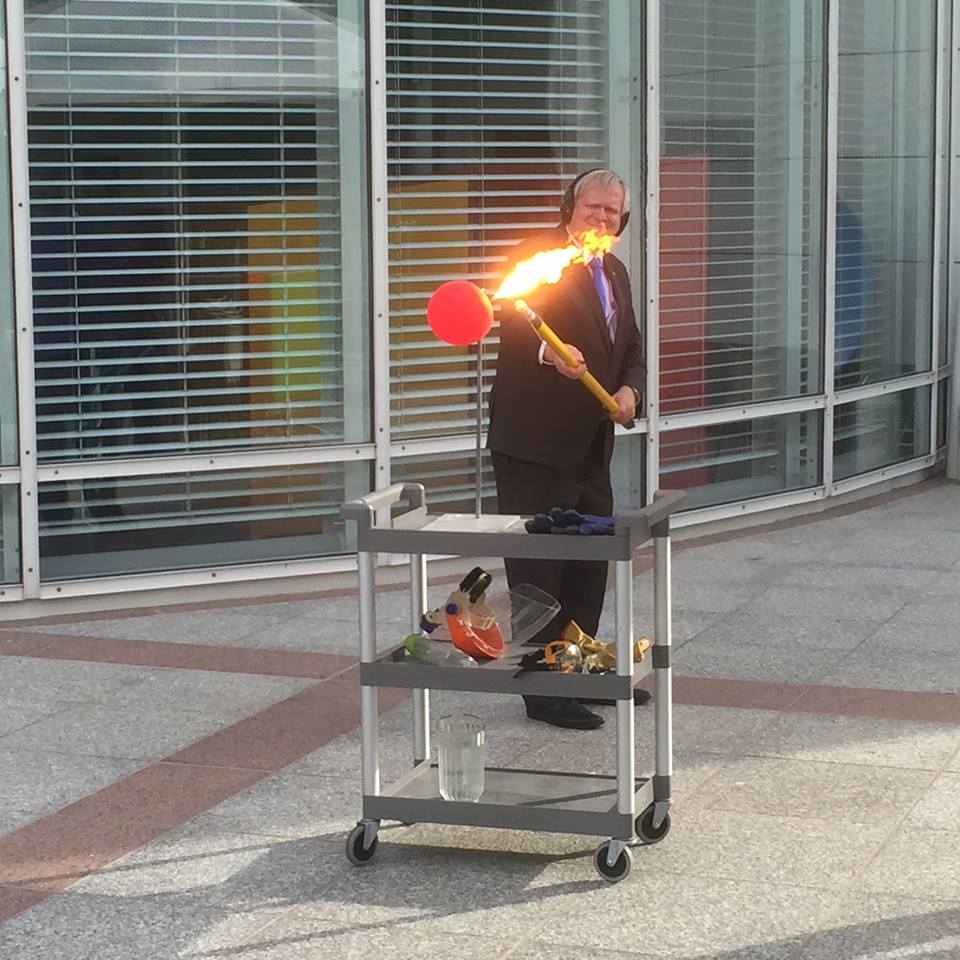 “To me, Questacon is one of those places I hope every family visits as part of their trip to the nation’s capital, to capture their minds and enthusiasm. I have been in Canberra now for 29 years and I remember going on family trips to Questacon since the time my children were tiny. My son has worked there and as Vice-Chancellor, I worked closely with Questacon as a partner. It has been a pretty major connection actually.”
“To me, Questacon is one of those places I hope every family visits as part of their trip to the nation’s capital, to capture their minds and enthusiasm. I have been in Canberra now for 29 years and I remember going on family trips to Questacon since the time my children were tiny. My son has worked there and as Vice-Chancellor, I worked closely with Questacon as a partner. It has been a pretty major connection actually.”
The now former VC, who’s term concluded at the close or 2023, is on the record as saying Australia needs to do better academically, and says Questacon is playing an important role bolstering educators teaching STEM subjects, but he would like to see an even stronger commitment to this from the government.
“The Programme for International Student Assessment (PISA) shows we in Australia continue to fall behind substantially from all of our teaching results of the early 2000s, not only in STEM subjects but across the board, although it would seem that the fall has slowed. So we need to ensure that every Australian student finishes high school with a reasonable level of numeracy, literacy and science. This has to be a focus of every student’s education journey because no one can afford to lack these skills when they finish school, especially not in the rapidly evolving digital world!
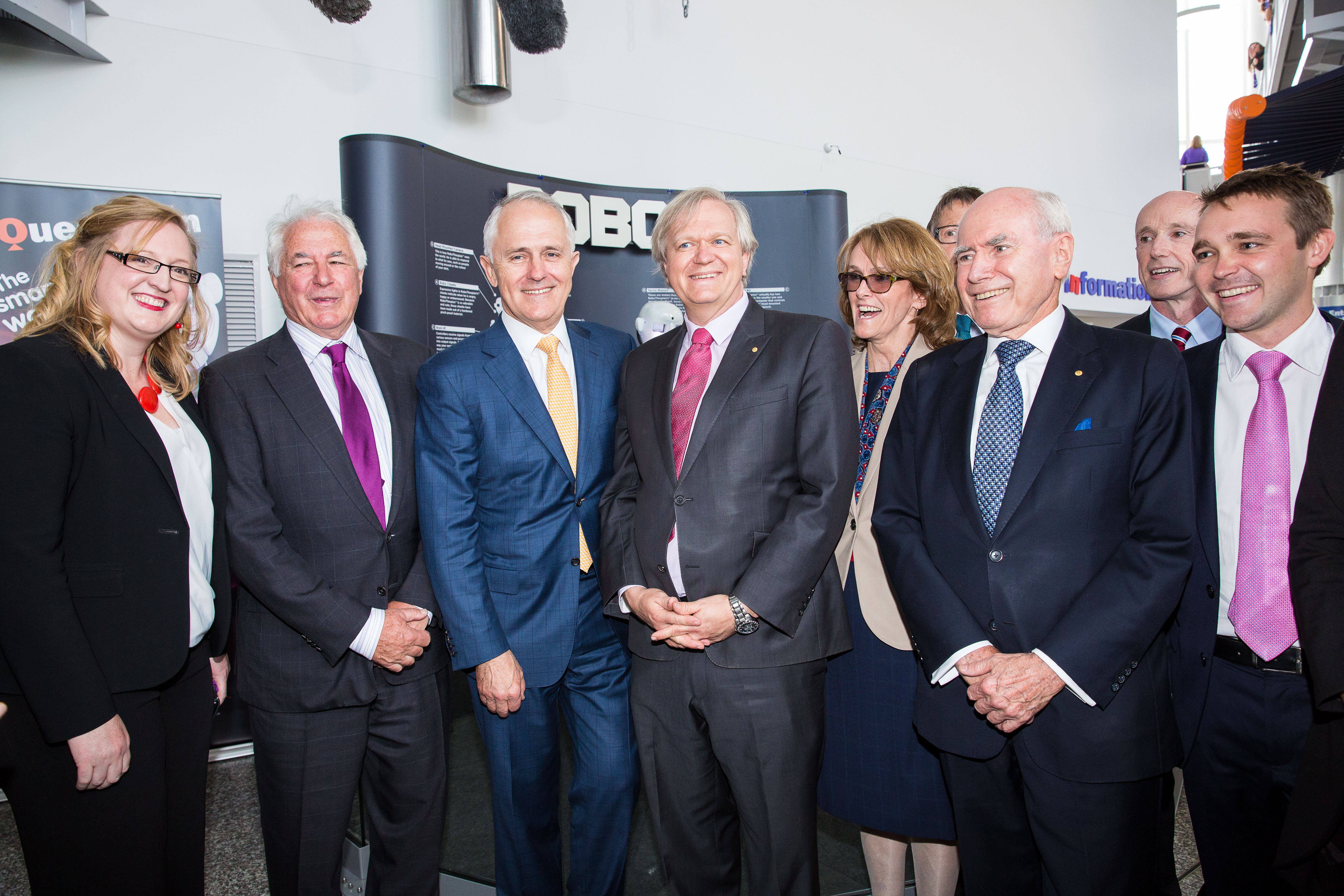 “Questacon provides inspiration and connection across the country through a variety of programs, so I think it’s doing a very good job in its mission, given the scope the Government provides it, but I would like to see the Government be ambitious and span that scope by an order of magnitude.
“Questacon provides inspiration and connection across the country through a variety of programs, so I think it’s doing a very good job in its mission, given the scope the Government provides it, but I would like to see the Government be ambitious and span that scope by an order of magnitude.
“I think it’s very important for all Australians to engage with STEM. The rapidly evolving digital world is all based on numeracy and science and if Australians are going to be able to harness the machines, rather than be replaced by them, they need to have these skills,” said Professor Schmidt.
While running the ANU has been rewarding, Professor Schmidt says he is looking forward to returning to pure research in his subject area.
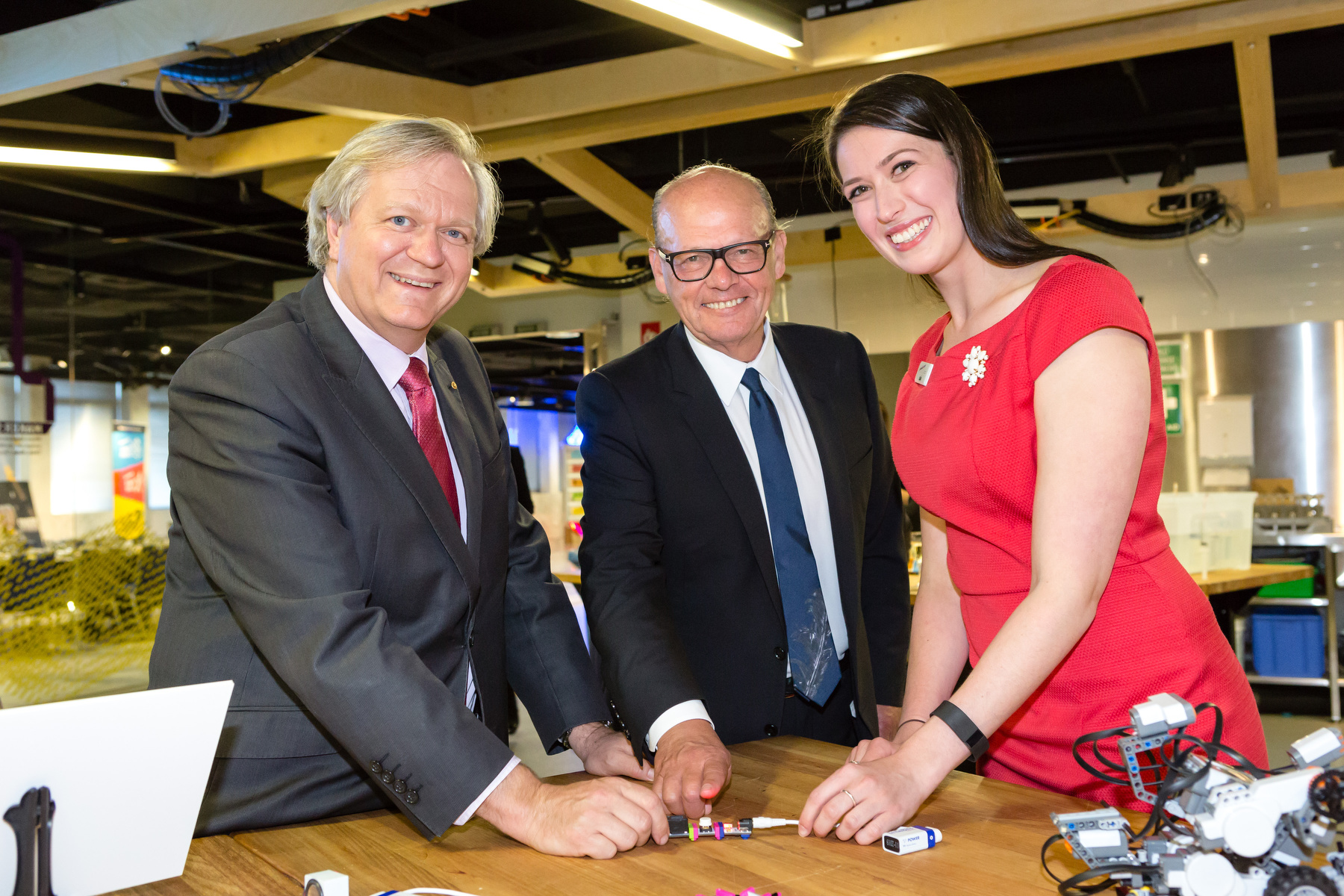 “Yes, I have missed it, and I am excited to return to the Mount Stromlo Observatory, the headquarters of the ANU Research School of Astronomy and Astrophysics, where I will be studying merging neutron stars that we detect through gravitational wave detectors.
“Yes, I have missed it, and I am excited to return to the Mount Stromlo Observatory, the headquarters of the ANU Research School of Astronomy and Astrophysics, where I will be studying merging neutron stars that we detect through gravitational wave detectors.
“I want to congratulate Questacon for 35 years of inspiring Australians in its present home! I look forward to the next 35 which I have no doubt will be even more exciting and inspiring - and hopefully with an even more sizable footprint that can continue to capture the country’s imagination in the rapidly changing future.”

